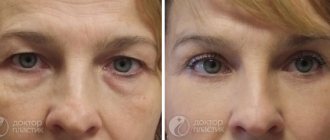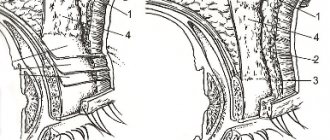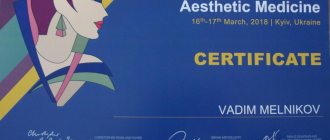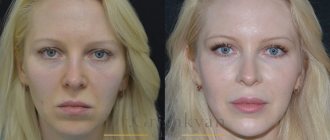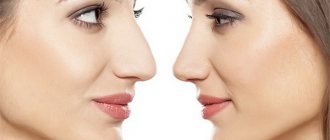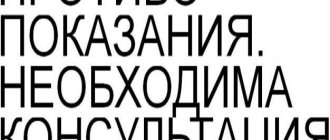A very popular operation is correction of the shape of the nose, or rhinoplasty. According to statistics, about 60% of surgeons' clients are dissatisfied with the shape of their nose. Rhinoplasty is one of the most difficult operations in aesthetic surgery; it requires the highest level of skill from the doctor. Surgeons are reluctant to undertake rhinoplasty. Because it gives many complications, and the nose is the most visible part of the face. We often come across the common opinion that the surgeon should make a nose modeled using Photoshop or like in a picture. But that doesn't happen. You can have perfect plastic surgery, immediately after it the nose will be without flaws, but after 2-3 months the growth of cartilage can cause deformation of the nose. This does not depend on the doctors or the patient. This cannot be foreseen. If an operation is performed to reduce a very large nose, then the cartilage is removed, but the skin hurts, getting used to the new frame. Adaptation can last 2-3 years.
The optimal age for the operation for girls is 16-17 years old, for boys - 17-18 years old. Upon reaching puberty, adaptation to external changes is easier. Traits change so quickly that teenagers do not have time to get used to them. However, according to statistics, patients more often turn to plastic surgeons after forty years.
Indications for rhinoplasty There may be several reasons for correcting the shape of the nose. Usually this is a person’s personal lack of perception of his appearance or medical indications for surgery. The most common complaints among patients are: • congenital pathologies (cleft lip, cleft palate); • acquired injuries; • deformed nasal septum; • large nostrils; • a long nose; • saddle nose shape; • hump; • change in the tip of the nose.
Nasal septum displacement 35% of operations are performed for medical reasons to correct respiratory problems. Rhinoseptoplasty is an ENT surgery aimed not at improving the aesthetic appearance of the nose, but at correcting the shape of the septum.
Nasal fracture 5% of rhinoplasty operations are prescribed due to a nasal fracture. During the first 10 days after injury, the surgeon can easily correct the defect. If the operation is delayed, the nose may remain deformed. Returning the normal shape of the nose will become difficult; the bones begin to fuse and become less mobile. Only post-traumatic rhinoplasty will correct the shape of the nose due to a fracture.
Circular facelift (Ryazan)
This is one of the most popular areas of aesthetic plastic surgery.
Modern surgical approaches to facial rejuvenation are complex and focus on the following points: - gravitational ptosis of the soft tissues of the face and neck - these changes are subject to correction by one or another lifting technique; - loss of soft tissue volume - lost proportions are restored by moving tissue (for example, the fatty body of the cheek), imbrication (stitching in 2 or more layers) of tissue, using implants (cheek, zygomatic), fillers (for example, hyaluronic acid or kollapan), as well as lipofilling; - skeletal changes (atrophic processes of the jaw) - decreased bite height, loss of teeth; are solved by prosthetics and orthodontic treatment. Age-related changes in the skin (loss of elasticity, pigmentation, rosacea, etc.) can be corrected to a certain extent by physical methods (lasers, IPL, RF), chemical methods (peelings), mechanical methods (dermabrasion), and the use of injection techniques (mesotherapy, biorevitalization). The choice of technique is determined by the degree of age-related changes, which have a certain dynamics: - 1st degree - changes affect only the upper part of the face; — 2nd degree — changes extend to the superomedial part of the middle third; - 3rd degree - changes are noted in the upper two-thirds of the face with minimal severity in the lower third of the face and neck; - 4th degree - changes appear in all parts of the face. The degree of age-related changes is important for the choice of surgery: isolated correction of underlying areas while ignoring changes in overlying areas inevitably leads to an inadequate final result.
In accordance with a comprehensive analysis of the face, the doctor selects: - the location and length of skin incisions (short-scar lifts, S-lift, U-lift or traditional incisions extending into the post-auricular area); — area of skin detachment (the current trend is to reduce the area of dissection, with separation of the cutaneous masticatory ligament along the anterior edge); — the nature of manipulations on the SMAS: suspension sutures, plication, SMAS-ectomy or radical formation of various versions of SMAS flaps; — the need for liposuction and/or lipofilling, the use of implants; — direction of movement of the skin and deep tissues (vertical, lateral, oblique vectors of tissue displacement or a combination thereof); — methods of tissue fixation (sutures, endotins, bioglue, etc.).
Indications for vaginal contouring
First of all, it is the desire of the woman herself to change the size of the labia or the shape of the vagina in accordance with her ideas about intimate beauty. In addition, there are several objective indications for such intervention:
- anatomical changes in the perineum that arose after its injury;
- stretching of the vagina and a decrease in the tone of its walls after childbirth;
- congenital imperfection in the shape and size of the labia or vagina;
- deterioration of tissue tone under the influence of age-related changes or as a result of rapid weight loss;
- discomfort caused by dry mucous membranes during sexual intercourse.
Plastic surgery technique for facelift (Ryazan)
Thus, the surgical technique is determined in dialogue by the joint coordinated efforts of the doctor and the patient, based on a competent comprehensive analysis of existing age-related changes, adequate perception and assessment of the proposed technical techniques and realistic expectations of postoperative results. With 1-2 degrees of facial aging, with normo- and asthenic types of soft tissue volume, with preserved skin elasticity, in young people, short-scar lifts are used in combination with a modification of SMAS and a vertical vector of tissue displacement.
With more pronounced changes, especially in the lateral parts of the face and neck, normo- and hypersthenic types of soft tissue volumes, surgical interventions are much more complex and extensive, with multi-vector tissue movement.
Preoperative examination plan - Complete blood count - Blood group, Rh factor - Blood sugar test - Biochemical blood test: - Total protein, bilirubin - general, etc., inc. - ASAT, AlAT, rest. nitrogen, creatinine, urea - Na+, K+ - Amylase, alkaline phosphatase - Coagulogram - Blood test for RW and ELISA, markers of viral hepatitis - General urine test - ECG (electrocardiogram with interpretation) - X-ray or FLG of the chest organs - Examination by a therapist (conclusion about the absence of contraindications to surgical treatment) - Ultrasound of the vessels of the head and neck - Consultation with an ophthalmologist
Preparing for surgery
Surgical operations are developed together with diagnosticians and treating specialists. Surgical methods are used in cases where conservative treatment seems inappropriate.
Each case requires a personal approach, since the success of the operation depends not only on the qualifications of the surgeon, but also on the patient’s health condition. Before the operation begins, the doctor examines the patient and talks with him to eliminate the possibility of the influence of unaccounted factors.
Carrying out facelift surgery (Ryazan)
The operation to tighten the skin of the face and neck lasts from 1 to 4 hours, as a rule, it is performed under IV or intubation anesthesia in combination with local anesthesia. In some cases, the operation can be performed under local anesthesia. In the postoperative period, all suture lines are closed with aseptic materials, and compression bandages are often used. Pain after surgery is not very disturbing. Patients are more concerned about the discomfort associated with the behavior of the surrounding society, as well as the compression bandage, swelling, and bruises that shape the appearance. Discharge from the hospital is usually carried out one day after the operation. The stitches are removed on day 7. An increase in swelling is observed for up to 3-4 days, then the swelling decreases. The final rehabilitation depends on the extent of the operation and the age of the patient. Bruising usually goes away within 10-14 days after surgery. Active rehabilitation can begin from day 3-5: physiotherapy - UHF, ultrasound, hardware cosmetology (Dibitron, LPG, BODE OXY-JET), manual lymphatic drainage massage, etc. You can wash your hair on the 4th day after surgery. For several days after the operation, it is necessary to refrain from bending and sudden movements of the head, physical activity, and eating rough food. It is not recommended to go to the sauna until 2 months. The primary outcome of the operation is assessed 1-3 months after surgery.
What are the results of vaginal contouring?
- Filling the thickness of the vaginal walls with filler with hyaluronic acid gives them additional volume and density and restores elasticity. A well-thought-out scheme for introducing plastic material allows you to form the correct shape of all organs of the intimate zone, ensuring proportionality and aesthetics of their appearance.
- During the correction, any cosmetic defects of the labia or vagina, consequences of injuries or sprains will be eliminated.
- An increase in the volume of the vaginal walls naturally leads to a narrowing of its lumen. This will give the woman new, more pronounced sensations during sexual intercourse. Correcting the size of the labia minora will further enhance the effect.
- Contour plastic surgery improves blood supply to the intimate area. And this, in turn, will increase her sensitivity to touch.
- Hyaluronic acid is an important participant in metabolism in the vaginal epithelium. Its increased influx stimulates the work of the glands that secrete lubricant. This means that the patient will experience no relief from dryness, irritation and discomfort during sexual intercourse.
- The positive psychological effect of such a correction is also extremely important. A woman gets rid of complexes associated with her own appearance and feels more confident in her sex life.
Doctors at SM-Clinic in Ryazan will help you change your body and get the look that you consider to be the most aesthetic and attractive. You can make an appointment with specialists by phone.
Thread lifting (Ryazan)
Age-related skin changes are unlikely to make anyone happy, but not everyone is ready for radical rejuvenation measures. Anesthesia, stitches, and a rehabilitation period—these are the objective factors that deter the majority from surgical correction of an aging face. However, there is a definite alternative to operations - ligature (synonyms: ligature, filament, filament) lifting. It allows you to correct some changes without surgery. In addition, “thread” technologies are suitable for people who, for one reason or another, are not recommended for classical plastic aesthetic surgery.
Minimal invasiveness, short rehabilitation period, absence of visible traces of intervention and low likelihood of complications - all this is legitimate for all types of ligature lifting. Another thing that this method has popularized is the ability to make small adjustments that improve but do not change the appearance. This applies to those who do not want rejuvenation, but want to look better in their age group.
There are several types of threads used for facial lifting and, accordingly, several techniques. Today we have a huge number of options designed for implantation into tissue. All of them can be divided into absorbable (biodegradable) and non-absorbable. The first include threads made of polylactic acid copolymers (Aptos Light Lift, Delta Skin), identical to the human body. They do not provoke allergic reactions and are completely eliminated from the body after 360 days. Among the non-absorbable types are gold and platinum threads, which are used for reinforcement, polypropylene threads with special serrated notches (Aptos), as well as threads with anchor fixation methods - they are also called Silhouette Lift. They all serve the same goal - improving your appearance in the safest possible way, avoiding skin incisions and scars.
Carrying out a face lift procedure (in Ryazan)
The procedure is performed under local anesthesia and lasts from 15 to 45 minutes. Threads are inserted using existing needles (Aptos method) or special needles (N. Serdev method, TISSULIFT) and are passed through the subcutaneous layer in directions that ensure smoothing of the nasolabial fold, raising the angle of the mouth and raising the zygomatic, sub-cheek area, the so-called. jowls. After removing the needle, the threads are fixed in the subcutaneous layer using microcones (Silhouette Lift, notches-clips (“Aptos”) or fixed to the deep aponeurotic layers (lifting according to Serdev, “TISSULIFT”, TISSULIFT), which prevents them from slipping back In this case, the tissues are shifted upward to a position characteristic of a young facial contour.
After a face lift procedure (in Ryazan)
The procedure does not require hospitalization; the patient remains under the supervision of a doctor for 1 to 2 hours, after which he can go home. Typically, patients return to their normal routine 2 to 3 days after surgery. The visible lifting effect occurs immediately, and the effectiveness of the manipulation can be noticed immediately. The preliminary result is visible already in the first ten days, and the final result is visible after one month. The introduced threads form a flexible frame that is fixed in the tissues. During the procedure, the oval of the face is tightened, the jawline becomes clearer, wrinkles and nasolabial folds are smoothed out. Restrictions: during the first two weeks, it is advisable to sleep on high pillows and only on your back. It is necessary to limit physical activity and try not to overload the facial muscles (avoid laughter, yawning, give up hard foods), as well as any traumatic effects, massage, etc.
The relationship between thread lifting and facelifts: these methods should be used according to indications, and not opposed to each other. In a classic facial lift, special incisions are made, and the tissue is not simply tightened and moved, but its excess is removed. With a thread lift, the skin is not cut and excess is not removed. There is only a redistribution of the sagging areas, returning them to the position they occupied in their youth. The introduction of threads has a minimal number of contraindications. Among them: - acute stages of any disease or exacerbation of chronic ones; — the presence of inflammation in the area where the threads are supposed to be inserted; - blood clotting disorder. Individual contraindications are identified by the doctor during consultation. For example, no specialist will offer ligature lifting to a patient who has sagging soft tissues of the face with pronounced excess skin. Because, having lifted the tissue with threads, the surgeon will not be able to do anything with the excess skin in the pre-auricular area and in the area of the zygomatic arch, where they are collected in a roller in front of the auricle.
The procedure for introducing threads is low-traumatic, does not leave scars or other marks and has a short rehabilitation period. Operations performed using different methods have virtually no risks and are not accompanied by any side effects. Swelling completely disappears after about seven to ten days. After the insertion of the threads, there are no scars or any noticeable traces of the intervention. Also, no restorative therapeutic procedures are needed. Long-term results: it is necessary to realistically evaluate the capabilities of technologies and understand that none of the techniques existing today can stop the natural aging process. The longevity of the effect depends on the method used, the condition of the tissues, age, individual characteristics and lifestyle of the patient, and other factors. Moreover, you should not be deceived, believe fabulous advertising promises and expect from a “lifting substitute” the duration and effectiveness of a classic facelift. On average, the effect lasts: in the eyebrow area - up to 1.5-2 years; in the middle zone of the face - up to 2-3 years; in the area of “wrinkles of sadness” (nasolabial folds, wrinkles around the eyes) - up to 1.5-2 years; in the jowl area - up to 2 years. The favorable period for thread lifting operations is from 20 to 50 years. In each specific case, the upper age limit is determined by the surgeon during consultation.
Endoscopic lift of the forehead, upper and middle third of the face (Ryazan)
In modern facial plastic surgery, methods using endoscopic techniques are widely used.
The advantages are obvious: minimal access, no traces of incisions with a sufficient amount of intervention. The essence of endoscopic lifting is the absence of postoperative scars; that is why it is also called “seamless” plastic surgery. This operation really has a lot of advantages: it leaves no scars, it is safe and has virtually no health restrictions, and the postoperative period takes less than one week, allowing you to return to normal life in a very short time. It is important that the incisions and, accordingly, scars after endoscopic interventions are located in places where they are camouflaged especially well: on the scalp and in the oral cavity. Endoscopic lifting is recommended at the age of 35-45 years, when the skin is quite elastic and firm, and there is no significant sagging of the tissues. The application area for seamless plastic surgery is the upper and middle thirds of the face - forehead, eyebrows, cheekbones, cheeks, nose and lips. Endoscopic lifting is ideal for men, because for the stronger sex it is extremely important to hide the very fact of a rejuvenating operation. In this case, the scar in the scalp is not visible after the stitches are removed, even with a short haircut.
Endoscopic forehead surgery is very effective for correcting drooping eyebrows, facial wrinkles on the forehead and on the bridge of the nose. Elimination of nasolabial folds, slight ptosis in the infraorbital area and in the cheekbone area is the scope of endoscopic lifting of the midface.
Endoscopic plastic surgery has its limitations. Rejuvenation occurs by tightening the deep layers without directly affecting the skin, therefore, too much tissue sagging, the inability of the skin to contract and its excess are absolute contraindications to an isolated type of operation. Intervention is indicated if there is so-called “overhanging” of the eyebrows, the patient complains of a gloomy, tired expression on the face, deep wrinkles between the eyebrows and horizontal wrinkles on the forehead that cannot be corrected by conservative methods. We are talking not only about age-related changes in the face, but also about the individual structural features of the soft tissues of the upper zone of the face and orbits, in which even young people have a “low” eyebrow position. In these cases, blepharoplasty does not lead to the desired result and forehead endoscopy should be used.
Operation The operation is performed under general anesthesia and lasts no more than an hour in total. Incisions: 2-3 incisions 1.5-2 cm long in the scalp area. The surgeon performs all the necessary manipulations using endoscopic equipment through tiny incisions (less than 1 cm in length) in the temporal part of the head, a little further than the hairline (when performing endoscopic forehead surgery, the incisions are located behind the forehead line, in the scalp). A miniature video camera displays the image on a special screen, allowing you to control the entire operation process. The procedure involves detachment of the soft tissues of the forehead and parietal areas under the periosteum, that is, in a low-vascular area where there are no sensory and motor nerves - a known guarantee of the safety of the operation and a guarantee of the absence of specific complications. The facial muscles that move the eyebrows, the “proud muscle,” as well as the depressor of the eyebrows are partially or completely removed. You can also fragment (cut in the form of squares) the frontalis muscle if it is overactive and there are deep and multiple horizontal wrinkles. The periosteum in the area of the orbital rim is cut away, depriving the frontalis muscle of its attachment, as a result of which the occipital muscles “gain advantage” and pull the scalp back. In the area of the upper third of the face, this advantage of the occipital muscles is manifested in the raising of the eyebrows and the entire complex of soft tissues of the forehead. At the same time, the look becomes more “open”. Raising the entire complex ensures a harmonious aesthetic result. The rehabilitation period after endoscopic forehead lifting is on average 9-10 days.
Endoscopic lifting (tightening) of the midface The intervention is indicated for deep nasolabial folds, drooping soft tissues of the zygomatic areas and corners of the mouth. Endoscopic facial lifting surgery can be considered as a gentler alternative to deep lifting of the SMAS (superficial musculofascial system of the face), especially in young patients. The purpose of the midface endolifting (lifting) operation is to lift the corners of the mouth, smooth out the nasolabial fold, lift the “zygomatic fat” into place and create a more prominent zygomatic area, partial lifting of the cheek area. Incisions: 2 incisions 1.5-2 cm long in the scalp of the temporal region; 2 incisions in the oral cavity along the transitional fold of the vestibule of the mouth. The procedure for endoscopic face lifting (tightening) consists of detaching the soft tissues of the zygomatic and maxillary areas under the periosteum and suspending the above-mentioned soft tissues of the middle zone of the face on special threads to the strong connective tissue of the temporal region (the so-called temporal fascia proper). Rehabilitation period after midface endolifting: 7-10 days. In the first 3-4 days, gentle oral hygiene is necessary.
Combined interventions The listed interventions (endoscopic facelift, forehead lift) can be performed isolated, sequentially, or simultaneously. Endoscopic interventions can be combined with classic anti-aging procedures, for example, with aesthetic blepharoplasty of the upper or lower eyelids, plastic surgery of the outer canthus (cantho- and tarsopexy), lifting of the lower face, liposuction of the lower face.
(Also optimal is the combination of mid-zone lifting using endoscopic techniques and SMAS lifting of the lower zone of the face and neck in a safe zone.
